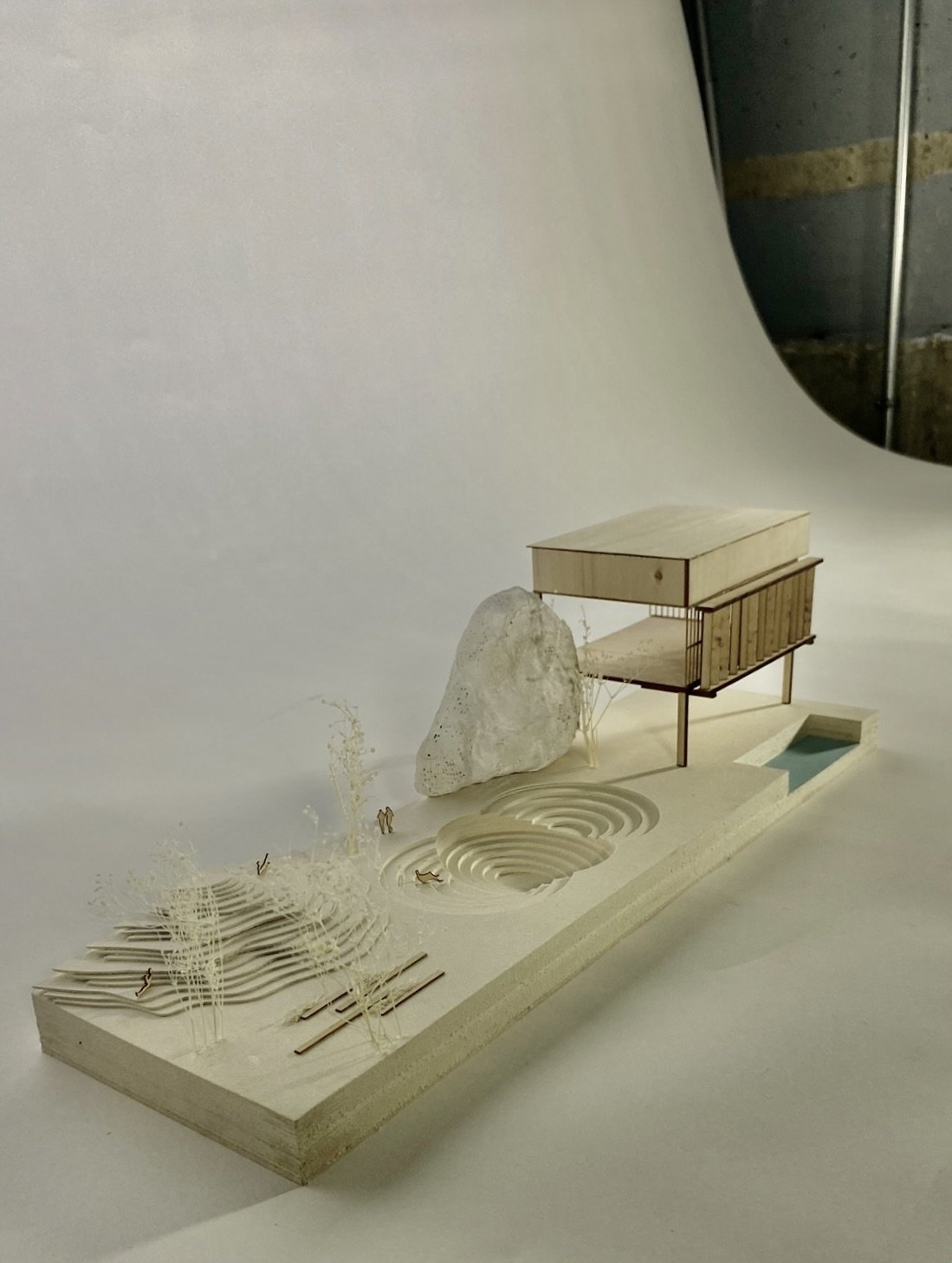A reimagination of the roof of corbusier's unité d'habitationOur speculative reimagining of the roof of Le Corbusier’s Unité d’Habitation challenges the rigidity and inflexibility of its original concrete structure, proposing instead a more fluid and responsive design that prioritizes the diverse needs of human experience. Drawing inspiration from the surrounding topographies—rugged mountains on one side and the open expanse of the sea on the other—we have woven the landscape directly into the architecture itself.
While Le Corbusier’s interiors were intentionally dark and introspective, fostering solitude and quiet reflection, our vision for the roof offers a contrasting spatial ethos—one defined by openness, luminosity, communal interaction, and vitality. Rather than perpetuating the prescriptive nature of Corbusier’s functionalism, our design restores agency to the individual, inviting users to shape the space according to their own needs and desires.
Central to this vision is the redefinition of spatial purpose. A raised platform—previously ambiguous in function and interruptive in flow—has been inverted and transformed into a subterranean amphitheater designed for performance, gathering, and expression. This space is visually and spatially connected to the rocky hillside above, from which spectators can enjoy events in a casual and natural setting.
Adjacent to the amphitheater, a garden offers fresh produce for a newly imagined communal kitchen. The former gym, stripped of enclosing walls, now serves as a flexible, open-plan space that houses this kitchen—emphasizing transparency, adaptability, and shared experience. No longer limited by a singular function, the building’s spaces are conceived as multipurpose environments where the individual defines their use.
The swimming pool, relocated to the edge of the structure and lined with plexiglass, provides panoramic views of the sea, allowing a swimmer or observer to feel immersed in the natural landscape. This integration of built and natural environments fosters a deeper connection between human and context.
Ultimately, our design rejects the authoritarian determinism of modernist architecture in favor of a participatory, human-centered approach—one that encourages creativity, community, and choice.
process images
Spring, 2023
Yale University, Scales of Design Bimal Mendis



